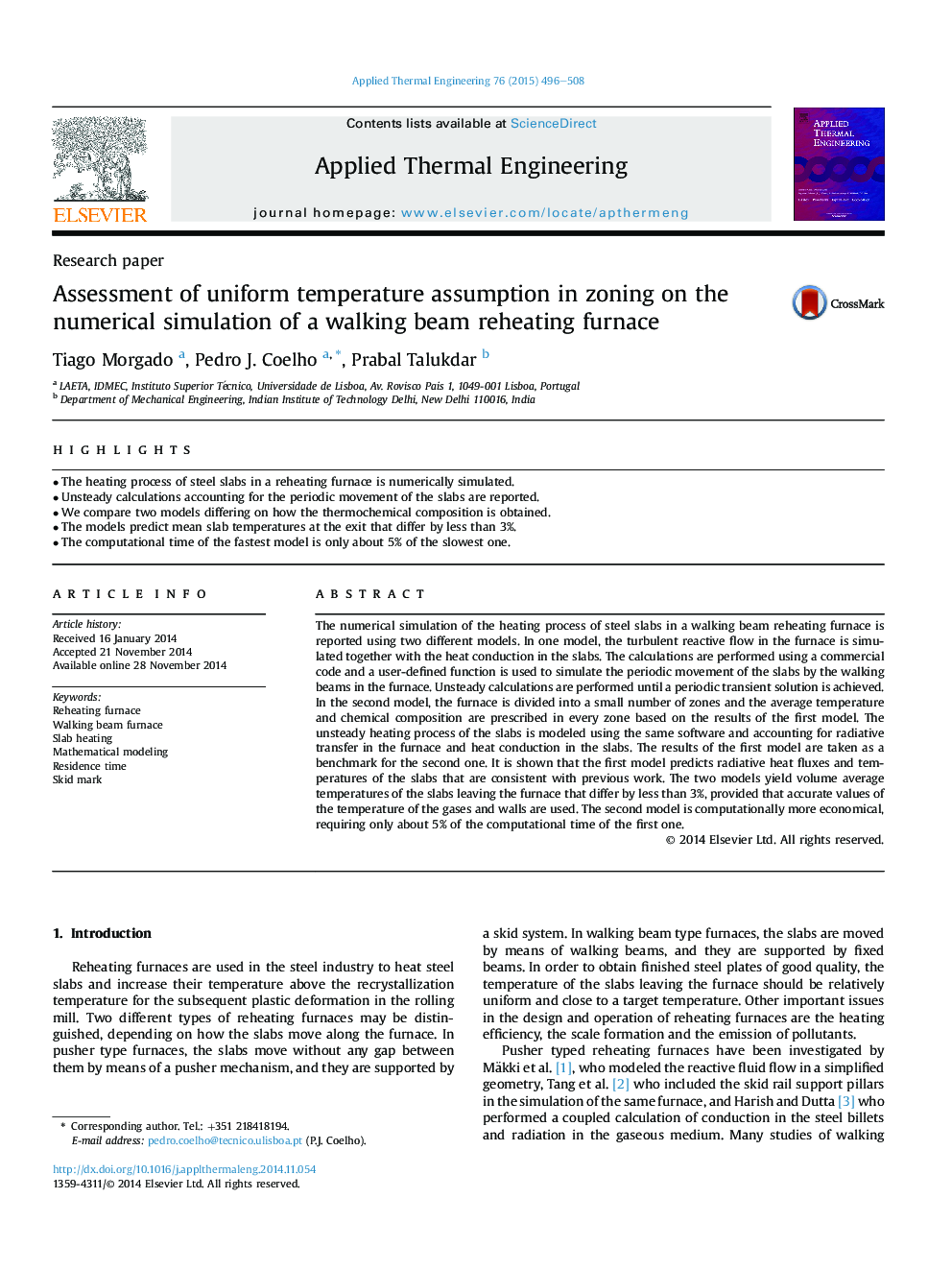| کد مقاله | کد نشریه | سال انتشار | مقاله انگلیسی | نسخه تمام متن |
|---|---|---|---|---|
| 646028 | 1457152 | 2015 | 13 صفحه PDF | دانلود رایگان |
• The heating process of steel slabs in a reheating furnace is numerically simulated.
• Unsteady calculations accounting for the periodic movement of the slabs are reported.
• We compare two models differing on how the thermochemical composition is obtained.
• The models predict mean slab temperatures at the exit that differ by less than 3%.
• The computational time of the fastest model is only about 5% of the slowest one.
The numerical simulation of the heating process of steel slabs in a walking beam reheating furnace is reported using two different models. In one model, the turbulent reactive flow in the furnace is simulated together with the heat conduction in the slabs. The calculations are performed using a commercial code and a user-defined function is used to simulate the periodic movement of the slabs by the walking beams in the furnace. Unsteady calculations are performed until a periodic transient solution is achieved. In the second model, the furnace is divided into a small number of zones and the average temperature and chemical composition are prescribed in every zone based on the results of the first model. The unsteady heating process of the slabs is modeled using the same software and accounting for radiative transfer in the furnace and heat conduction in the slabs. The results of the first model are taken as a benchmark for the second one. It is shown that the first model predicts radiative heat fluxes and temperatures of the slabs that are consistent with previous work. The two models yield volume average temperatures of the slabs leaving the furnace that differ by less than 3%, provided that accurate values of the temperature of the gases and walls are used. The second model is computationally more economical, requiring only about 5% of the computational time of the first one.
Journal: Applied Thermal Engineering - Volume 76, 5 February 2015, Pages 496–508
